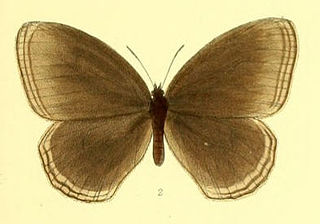
Assam is a state in northeastern India, south of the eastern Himalayas along the Brahmaputra and Barak River valleys. Assam covers an area of 78,438 km2 (30,285 sq mi). The state is bordered by Bhutan and Arunachal Pradesh to the north; Nagaland and Manipur to the east; Meghalaya, Tripura, Mizoram and Bangladesh to the south; and West Bengal to the west via the Siliguri Corridor, a 22 kilometres (14 mi) wide strip of land that connects the state to the rest of India. It is also one of the world's most populous subdivisions. Assamese is the official and most commonly spoken language of the state, followed by Bengali, which is official in the Barak Valley and Bodo which is official in Bodoland Territorial Region.
Scylax of Caryanda was a Greek explorer and writer of the late 6th and early 5th centuries BCE. His own writings are lost, though occasionally cited or quoted by later Greek and Roman authors. The periplus sometimes called the Periplus of Scylax is not, in fact, by him; that so-called Periplus of Pseudo-Scylax was written in about the early 330s BCE by an unknown author working in the ambit of the post-Platonic Academy and/or the Aristotelian Peripatos (Lyceum) at Athens.

The Periplus of Pseudo-Scylax is an ancient Greek periplus describing the sea route around the Mediterranean and Black Sea. It probably dates from the mid-4th century BC, specifically the 330s, and was probably written at or near Athens. Its author is often included among the ranks of 'minor' Greek geographers. There is only one manuscript available, which postdates the original work by over 1500 years.

Myndus or Myndos was an ancient Dorian colony of Troezen, on the coast of Caria in Asia Minor, (Turkey), sited on the Bodrum Peninsula, a few miles northwest of Halicarnassus. The site is now occupied by the modern village of Gümüslük.
Deris was an ancient Greek city located in ancient Thrace, located in the region of the Thracian Chersonesus. It is cited in the Periplus of Pseudo-Scylax, which mentions that it was an Emporium and was located between the river Melas, which flows into the Gulf of Melas, and Cardia. It has been suggested that it would be the same as a city called Deiraeus or Deiraios (Δειραῖος), cited by Stephanus of Byzantium and appearing in an inscription according to which it belonged to the Delian League.
Pactya or Paktye was an ancient Greek city located in ancient Thrace, on the Thracian Chersonesus. It is cited in the Periplus of Pseudo-Scylax, in its recitation of the towns of the Thracian Chersonesus, along with Aegospotami, Cressa, Crithote and then Pactya, situated 36 stadia from Cardia. It is said that Miltiades founded it. Strabo places it on the Propontis between Crithote and Macron Teichos. According to Herodotus, Miltiades the Elder ordered a wall built between Cardia, which was on the coast of Gulf of Melas and Pactya, which was on the Propontis side, to prevent invasion of the Chersonesus by the Apsinthii. Alcibiades retired here the Athenians had for the second time deprived him of the command. It was a member of the Delian League. Pliny the Elder points out that both Cardia and Pactya later joined to form Lysimachia.
Ide was an ancient Greek city located in ancient Thrace, located in the region of the Thracian Chersonesus. It is cited in the Periplus of Pseudo-Scylax, in the second position of its recitation of the towns of the Thracian Chersonesus, along with Cardia, Ide, Paeon, Alopeconnesus, Araplus, Elaeus and Sestos.
Cressa or Kressa was an ancient Greek city located in ancient Thrace, on the Thracian Chersonesus. It is cited in the Periplus of Pseudo-Scylax, in the second position of its recitation of the towns of the Thracian Chersonesus, along with Aegospotami, Cressa, Crithote and Pactya. It may be the same town cited by Pliny the Elder as Crissa on the Propontis.
Crithote or Krithote was an ancient Greek city located in Thrace, located in the region of the Thracian Chersonesos. It was on the Hellespont north of Gallipolis, and was an Athenian colony founded by Miltiades. It is cited in the Periplus of Pseudo-Scylax among the cities of the Thracian Chersonesos: Aegospotami, Cressa, Crithote, and Pactya.
Paeon or Paion was an ancient Greek city located in ancient Thrace, on the west coast of the Thracian Chersonesus. It is cited in the Periplus of Pseudo-Scylax, in the third position of its recitation of the towns of the Thracian Chersonesus, along with Cardia, Ide, Paeon, Alopeconnesus, Araplus, Elaeus and Sestos.
Tyrodiza was a Greek city in ancient Thrace, located in the region of the Propontis. It appears to have flourished between 550 BCE and 330 BCE, and is identified with the place called Tiristasis in the Periplus of Pseudo-Scylax and Pliny the Elder. It was a member of the Delian League and appears in the tribute lists of ancient Athens between 452/1 and 445/4 BCE. In 340 BCE, Tiristasis was taken by the Athenian general Diopeithes, who enslaved its inhabitants along with those of Crobyle.

Zipaetis is a genus of satyrid butterflies.
Cobrys or Kobrys was a coastal Greek town in ancient Thrace, on the Thracian Chersonesus. It is mentioned in the Periplus of Pseudo-Scylax
Siderus was a port town of ancient Lycia, referenced in the Periplus of Pseudo-Scylax and the Stadiasmus Maris Magni. The town is also noted by Stephanus of Byzantium under the name Sidarus or Sidarous (Σιδαροῦς). The place may also have borne the name Posidarisus or Posidarisous, mentioned in The Chronicon of Hippolytus as being 30 stadia from Crambousa and the same distance from Moron Hydor.
Carambis or Karambis was an ancient Greek city of ancient Paphlagonia, on a promontory of the same name. The town is mentioned in the Periplus of Pseudo-Scylax and by Pliny the Elder. The name occurs as Carambas in the Peutinger Table.
Armene was an ancient Greek city on the Black Sea coast of ancient Paphlagonia. Xenophon in his Anabasis writes that the Ten Thousand on their return anchored their ships here, and stayed five days. The place belonged to the Sinopians. It was 50 stadia west of Sinope, and had a port. A small river, named Ochosbanes by Marcian of Heraclea, and named also Ochthomanes in the Anonymous Periplus, and Ocheraenus in the Periplus of Pseudo-Scylax, falls into the harbour.
Neonteichos was a fortified town on the coast of ancient Thrace, mentioned in the Periplus of Pseudo-Scylax and by Xenophon.
Cypasis or Kypasis was an Emporium of the Cardia, on the east of the Hebrus River, on the Bay of Melas.





